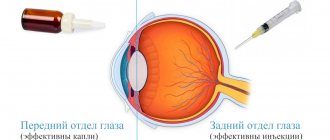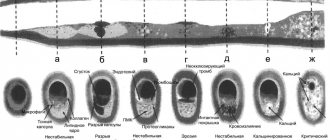October 12, 2021
5029
The federal chain of pharmacies "Omnifarm" offers a wide range of metabolic drugs. Modern drugs to improve metabolism can be ordered in Moscow and other regions. You can get the necessary medications at the nearest pharmacy, taking into account the geolocation of our network. It includes 20 pharmacies offering convenient services and a help system operating throughout Russia.
On the site you can find the necessary drugs to improve metabolism, designed to speed up metabolism. You can search by name, main component or manufacturer. For all medicines, upon request of the buyer, a certificate is provided along with the receipt.
Types of metabolic disorders, what medications are needed
Among the main factors causing metabolic disorders in the body are insufficient physical activity, unbalanced nutrition, and hormonal predisposition. Various acute and chronic diseases also affect human metabolism. Metabolics are drugs that correct metabolism and vital energy in the body, helping to speed up metabolism.
Types of violations in the digestibility and processing of elements occur in the main categories:
- protein metabolism;
- carbohydrate;
- fat metabolism;
- vitamins and minerals;
- water-mineral;
- acid-base;
- hormonal balance.
Proper metabolism and comprehensive weight loss are ensured by various fat-burning, tonic, and immunostimulating agents. The medications your doctor prescribes to improve your metabolism will differ in each of these cases. They are designed to regulate metabolic processes occurring in the body.
- Restore functionality at the cellular level and eliminate metabolic failures.
- The processes of processing useful components supplied with food are brought to a normal state.
- Restore complex biochemical reactions occurring in the human body.
- They establish the production of the necessary energy for normal life.
There is no one cure for all metabolic disorders in the body. In medical practice, different types of drugs are used to normalize the breakdown and processing of fats, the absorption of proteins, carbohydrates, minerals, vitamins, and the correct balance of hormones.
Drugs for lipid metabolism disorders
Violation of lipid metabolism occurs due to failures in the absorption and breakdown of lipids (fats) with the formation of accumulation and the appearance of excess weight or active processing and depletion. This directly affects human morbidity and the occurrence of severe pathologies of the gastrointestinal tract and blood vessels. Medicines to improve fat metabolism include different drugs:
- Enzymes;
- Metabolics;
- Antioxidants;
- Fibrates;
- Statins (lowering cholesterol);
- Combined metabolism correctors.
Vitamins for impaired lipid metabolism include Fish oil, Nicotinic acid, vitamin E (retinol acetate or palmitate).
Metabolism of vitamins, micro- and macroelements
Pharmacological drugs that help improve the metabolism of vitamins and minerals are prescribed in the following cases:
- lack of these elements in the body;
- excessive intake from food;
- failures in breakdown and digestibility;
- imbalance of vital systems.
As a result of hypovitaminosis or hypervitaminosis, deficiency of micro- and macroelements, a huge range of severe pathologies arises. An imbalance of these components causes illness, affects the condition of hair, skin, nails, and directly affects a person’s appearance.
For example, iodine deficiency leads to the development and progression of thyroid disease and an imbalance of thyroid hormones. Due to hormonal imbalance, weight changes occur. An excess of this microelement in the body is also dangerous; it can cause disruptions in the endocrine system. Therefore, it is recommended to use drugs as prescribed by a doctor.
A huge selection of multivitamin complexes with the rarest vitamins and microelements allows you to undergo a full course of treatment and restore the lost balance.
An exceptional correction of mineral metabolism is carried out with preparations containing iron, copper, zinc, phosphorus, calcium, chromium and others. Ferrum-LEK, rich in iron, allows you to replenish your body with this useful element. This complex is prescribed for iron deficiency anemia and pregnancy.
Alarming trends
Until recently, metabolic syndrome primarily affected older people (over 60 years of age).
The picture has changed significantly over the past 20 years. The dynamics have shown that this problem is getting younger and becoming relevant for the younger population. In some countries, the proportion of adults suffering from these symptoms reaches 25%. Metabolic syndrome has another name - “new world syndrome”. The fact is that mainly people who lead a sedentary lifestyle (and this applies to the majority of residents of large cities) and consume large amounts of fast carbohydrates and trans fats suffer from obesity and related pathologies. As a result, there is a worldwide surge in cardiovascular disease and diabetes.
Metabolic syndrome affects both developed countries (where high-tech production has eliminated the need for the population to move a lot) and developing countries (a large percentage of the population of which has to save on food and consume more fast carbohydrates - pasta, bread, potatoes, corn).
There is another trend in recent years. Women of reproductive age began to suffer from metabolic syndrome. What this is connected with is not entirely clear. Presumably, oral contraceptives may have a negative effect.
Just imagine: over the past 20 years, the number of people with metabolic syndrome in the world has increased by more than 100 million - that is, by a third.
The problem of childhood obesity, and with it childhood MS, is especially acute. Scientists link the increase in childhood obesity to frequent refusal of breastfeeding. Breastfeeding eliminates early introduction of complementary foods, which can lead to unhealthy weight gain. Protein and total energy intakes are higher in formula-fed infants, leading to increased infant weight. Formula feeding also slightly increases insulin levels, which in turn promotes fat deposition and the early development of fat cells (adipocytes).
Thus, rapid weight gain in infancy is associated with childhood obesity. Breastfeeding can help program a person to maintain a healthy weight as an adult.
Protein metabolism disorders
Insufficient supply of protein and amino acids and metabolic disorders lead to exhaustion of the body, weakened immunity, and a decrease in the transport function for the delivery of nutrients. This deficiency causes protein-energy deficiency, which is eliminated by various drugs:
- anabolics;
- amino acids;
- vitamins and minerals;
- immunomodulators;
- general tonic compounds.
In case of insufficiency of endocrine regulation, adaptogens and general tonics are prescribed. Profound depletion and dysfunction resulting from the lack of protein in food are eliminated by drugs to improve metabolism for parenteral and enteral administration, respectively, by injection into a vein and through a tube.
Carbohydrate metabolism disorders
Diabetes mellitus, pancreatitis, arterial hypertension and other diseases occur against the background of carbohydrate metabolism disorders. The body is not able to independently process the main sources of energy resources, such as:
- glucose;
- fructose;
- galactose;
- glycogen.
Drug therapy includes drugs to improve metabolism, depending on the type of malfunction in the body. For this purpose, enzymes, anti-enzymes, hypoglycemic agents, drugs that regulate uric acid metabolism and others are used. The doctor prescribes Cocarboxylase, ATP, Vitrum Cardio Omega-3, and multivitamin complexes.
Metabolic drugs in cardiological practice
Recently, interest in the metabolic direction in the treatment of stable forms of coronary artery disease has increased. Metabolically active drugs can potentially preserve the viability of the myocardium (hibernating myocardium) until surgery to restore coronary blood flow. Metabolic therapy is aimed at improving the efficiency of oxygen utilization by the myocardium under ischemic conditions. Normalization of energy metabolism in cardiomyocytes is an important and promising approach to the treatment of patients with coronary artery disease.
Possible pathways of cytoprotection:
- inhibition of the oxidation of free fatty acids (trimetazidine, ranolazine);
- increased flow of glucose into the myocardium (glucose-sodium-insulin solution);
- stimulation of glucose oxidation (L-Carnitine);
- replenishment of macroerg reserves (phosphocreatine);
- improvement of transmyocardial transport of NAD+/NADH (amino acids);
- opening of K+-ATP channels (Nicorandil).
Of the currently known myocardial cytoprotectors, the most studied drug with proven antianginal and anti-ischemic effects is trimetazidine, which exerts its effect at the cellular level and acts directly on ischemic cardiomyocytes. The high effectiveness of trimetazidine in the treatment of coronary artery disease is explained by its direct cytoprotective anti-ischemic effect. Trimetazidine, on the one hand, rearranges energy metabolism, increasing its efficiency, on the other hand, it reduces the formation of free radicals, blocking the oxidation of fatty acids [10, 13].
The mechanism of action of trimetazidine is related to:
- with inhibition of 3-ketoacyl-CoA thiolase, leading to a decrease in beta-oxidation of fatty acids and stimulation of glucose oxidation;
- optimization of myocardial function under ischemic conditions by reducing proton production and limiting intracellular accumulation of Na+ and Ca2+;
- accelerating the renewal of membrane phospholipids and protecting membranes from the damaging effects of long-chain acyl derivatives.
These processes help maintain the required level of ATP in cardiomyocytes, reduce intracellular acidosis and excessive accumulation of calcium ions.
Thus, the anti-ischemic effect of trimetazidine is carried out at the level of the myocardial cell due to changes in metabolic transformations, which allows the cell to increase the efficiency of oxygen use in conditions of reduced oxygen delivery and thus preserve the functions of the cardiomyocyte.
Trimetazidine on the Russian pharmaceutical market is represented by such drugs as Preductal (France), Trimetazid (Poland), Trimetazidine, Rimecor (Russia).
Numerous studies have convincingly demonstrated the high antianginal and anti-ischemic efficacy of trimetazidine in patients with coronary artery disease, both in monotherapy and in combination with other drugs [14, 17, 18]. The drug is no less effective in the treatment of stable angina than beta-blockers or calcium antagonists, but it is most effective in combination with basic hemodynamic antianginal drugs. The advantages of trimetazidine include the absence of hemodynamic effects, which allows the drug to be prescribed regardless of the level of blood pressure, heart rate characteristics and myocardial contractile function.
Trimetazidine can be prescribed at any stage of the treatment of angina pectoris as part of combination antianginal therapy to enhance the effectiveness of beta-blockers, calcium antagonists and nitrates in the following categories of patients:
- with newly diagnosed exertional angina;
- in whom it is not possible to achieve a therapeutic effect with hemodynamic antianginal drugs;
- in elderly people;
- with left ventricular dysfunction;
- with CHF;
- with diabetes mellitus;
- with sick sinus syndrome;
- in whom traditional antianginal drugs cause side effects;
- in persons with severe side effects during treatment with antianginal drugs.
Trimetazidine allows you to reduce the dose of drugs that have side effects, improving the overall tolerability of treatment.
Important points are the absence of contraindications, drug incompatibility, and its good tolerability. Adverse reactions occur very rarely and are always mild. This allows the drug to be used by elderly people with diabetes mellitus and other concomitant diseases.
There are no data yet on the effect of trimetazidine on long-term outcomes and cardiovascular mortality in patients with coronary artery disease, so the advisability of its use in the absence of angina or episodes of silent myocardial ischemia has not been established.
Normalization of energy metabolism in cardiomyocytes is an important and promising approach to the treatment of patients with CHF. Metabolic therapy in such patients should be aimed at improving the efficiency of oxygen utilization by the myocardium under ischemic conditions. However, there are very few studies devoted to studying the characteristics of the action of trimetazidine in patients with CHF [7, 11, 16].
In this regard, at the Department of Clinical Pharmacology and Pharmacotherapy of the FPPOV MMA named after. I.M. Sechenov conducted a study to determine the limits and capabilities of trimetazidine in the complex therapy of patients with CHF, which has complicated the course of coronary artery disease.
The study included 82 patients with NYHA functional classes II–III CHF, which complicated the course of coronary artery disease. Among them there were 67 men, 15 women, the average age was 62.2 ± 7.3 years. Before inclusion in the study, all patients achieved stabilization of their condition during therapy with cardiac glycosides, diuretics, and beta-blockers in individually selected doses. All patients were divided into two groups: the first (main) group included 40 patients, to whom trimetazidine at a dose of 60 mg/day and the ACE inhibitor enalapril at a dose of 5–10 mg/day were added to complex therapy; the second (control) group consisted of 42 patients who received only enalapril without trimetazidine to complex therapy. There were no significant differences between the groups in age, gender, duration of the disease, or functional class of CHF. The observation period was 16 weeks.
The clinical effectiveness of therapy was assessed by the dynamics of the functional class of CHF. All patients underwent Holter ECG monitoring with assessment of the average daily heart rate (HR), the total number of episodes of ST segment depression, and the maximum value of ST segment depression. ST segment trends were regarded as ischemic when it decreased horizontally by at least 1 mm relative to the J point for 1 minute or more. The anti-ischemic effect was considered significant if the number of episodes of myocardial ischemia decreased by 3 or more and/or total ST segment depression decreased by 50% or more. The nature of heart rhythm disturbances was also assessed: the number of isolated ventricular extrasystoles (VCs), paired VCs, supraventricular extrasystoles (VVCs), episodes of unsustained ventricular tachycardia (VT), runs of supraventricular tachycardia (SVT). The criteria for the antiarrhythmic effect were considered to be a reduction in isolated PVCs by 50%, paired PVCs by 90% with complete elimination of VT episodes.
To assess exercise tolerance, patients underwent a treadmill test. The criteria for a positive test were a typical attack of angina and/or persistent horizontal ST segment depression of 1 mm or more. When analyzing the results of the treadmill test, the maximum power of the load performed and the total duration of the load were assessed.
In order to assess the state of intracardiac hemodynamics, patients underwent an echocardiographic study with assessment of the following morphofunctional parameters of the heart: left atrium (LA) size, cm; end-diastolic size (EDD), cm; end-systolic size (ESR), cm; ejection fraction (EF) of the left ventricle, %.
Clinical and instrumental studies were carried out before and after 16 weeks of continuous therapy.
Statistical analysis of the obtained data was carried out using standard statistical methods, including calculation of the unpaired Student's t test. All data are presented as mean standard deviations (M ± m).
Analysis of the dynamics of the FC of CHF showed that after 16 weeks of treatment, 28% of patients in the first group and 26% of patients in the second group achieved an improvement in clinical condition and a transition to a lower FC of CHF. The number of patients with FC III decreased in the first group from 50 to 27.5%, in the second - from 64.3 to 30.9%. The number of patients with FC II increased to 67.5 and 66.7%, respectively. During treatment, patients with FC I appeared in both groups: 5% in the first group and 2.4% in the second. Overall, the FC of CHF decreased by 11% (p < 0.05) and 10% (p < 0.05), respectively (
).
According to Holter ECG monitoring at baseline, the following data were obtained in patients included in the study: NVEs were recorded in all patients in both groups; in 9 patients of the first group and in 7 patients of the second group, runs of NVT were recorded. In all patients, isolated PVCs were recorded, including potentially life-threatening PVCs of high grades: paired PVCs and episodes of unstable VT.
After 16 weeks of treatment in the first group, the number of paired VTs decreased by 57.6% (p < 0.05), in the second group - by 28.8% (p < 0.05), the number of episodes of unstable VT - by 58.3% (p < 0.05) and 36.8% (p < 0.05), respectively, the number of isolated PVCs - by 23.6% (p > 0.05) and 6.9% (p > 0.05), respectively , the number of NVEs - by 26.4% (p 0.05) and 10.8% (p > 0.05), respectively.
No new paired PVCs or episodes of nonsustained VT were reported in any patient receiving trimetazidine therapy.
According to Holter ECG monitoring, a significant decrease in the daily number of episodes of ST segment depression was noted in the first group by 55.5% (p < 0.05), in the second - by 23.3% (p < 0.05).
The improvement in the clinical condition of the patients was accompanied by an improvement in the morphofunctional parameters of the heart, which was more pronounced in patients of the first group who received trimetazidine. After 16 weeks of continuous treatment, there was a decrease in EDR in the first group by 4.7% (p < 0.05), in the second group - by 2.1% (p < 0.05); TFR - by 7.5% (p < 0.05) and 4.8% (p < 0.05), respectively; EF increased in the first group by 13.7% (p < 0.05), in the second group - by 10.4% (p < 0.05).
The results of the treadmill test provide objective confirmation of the high antianginal and anti-ischemic activity of trimetazidine: the maximum load power in patients of the first group increased by 12.3% (p < 0.05), in patients of the second group - by 6.7% (p < 0. 05), the total duration of the load increased by 16.8% (p < 0.05) and by 8.2% (p < 0.05), respectively.
Thus, a clear understanding of the pathophysiological mechanisms of damage to myocardial cells under conditions of ischemia and hypoxia, which are based on metabolic disorders, necessitates the inclusion of antioxidants and antihypoxants in the complex therapy of stable forms of IHD.
Normalization of energy metabolism in cardiomyocytes is also an extremely important and promising approach to the treatment of patients with coronary heart disease complicated by the development of chronic heart failure. Adding the metabolic drug trimetazidine to the traditional therapy of patients with CHF makes it possible to achieve more pronounced dynamics of clinical manifestations of the disease and a more pronounced improvement in the morphofunctional parameters of the heart. Along with antianginal and anti-ischemic effects, trimetazidine also has a positive effect on the contractile function of the left ventricular myocardium and reduces the ectopic activity of the heart by reducing the electrical instability of the ischemic myocardium.
To obtain evidence of the positive effect of metabolic agents on endpoints, the incidence of cardiovascular events, mortality and disease prognosis in patients with coronary artery disease, they need to be further studied in large-scale randomized trials.
For questions regarding literature, please contact the editor.
T. E. Morozova , Doctor of Medical Sciences, Professor of MMA named after. I. M. Sechenova , Moscow
Other types of metabolic disorders
The appearance of metabolic failures in muscles provokes the development of severe neuromuscular diseases. This leads to disruption of the activity of the heart and blood vessels. In these cases, antioxidants, cardioprotectors, enzymes, antienzymes and other drugs are used.
Violation of water and mineral balance leads to the appearance of edema, kidney disease, pressure surges, the formation of excess fluid in tissues and other pathological processes. Antioxidants and acid-base regulators (ABC) are prescribed.
In each case, an individual scheme is recommended:
- Prescribing and taking medications.
- Special diet.
- A radical lifestyle change.
- Correction of physical activity.
- Sleep patterns to improve brain function.
Symptoms of metabolic syndrome
When diagnosing MS, 4 parameters are distinguished:
- hypertension (high blood pressure);
- high blood sugar;
- obesity (waist circumference more than 102 cm in men and more than 88 cm in women);
- abnormal cholesterol levels (decreased high-density lipoprotein levels and/or increased triglyceride levels).
Each of these conditions is dangerous individually, but together they trigger a cascade of pathological processes and turn into a mortal threat to blood vessels and human life and health in general.
Doctors nicknamed this complex of diseases the “deadly quartet.” In fact, metabolic syndrome is not an independent disease. This is a group of symptoms that often occur together and increase the risk of other - even more severe - disorders.
Weight changes due to metabolic disorders
An important condition in the treatment of obesity is the establishment of the very causes of the disease and excess weight. Before losing weight, metabolic disorders are first eliminated. These two phenomena are closely interrelated; in this case, it is better to consult a doctor.
The patient is prescribed laboratory tests of blood, urine, and other tests, and based on the results, corrective therapy is recommended.
- Medicines for disorders of lipoprotein metabolism with the addition of drugs that affect appetite, as well as enterosorbents.
- Special complexes for replenishing the deficiency of vitamins, micro- and macroelements in the form of tablets, dragees and solutions.
Modern single-dose medications and complex medications allow you to maintain your body in ideal shape and prevent the occurrence of failures and deficiency conditions.
References
- El-Farhan, N., Rees, D., Evans, C. Measuring cortisol in serum, urine and saliva - are our assays good enough? Annals of clinical biochemistry, 2022. - Vol. 54(3). — P. 308-322.
- Clinical laboratory diagnostics: textbook / ed. V.V. Dolgova, Federal State Budgetary Educational Institution of Further Professional Education "Russian Medical Academy of Continuing Professional Education". - M.: FGBOU DPO RMANPO, 2016. - 668 p.
- Bobrik, M.I. Mutual influence of thyroid and carbohydrate metabolism. Paradigms and paradoxes. MJE, 2015. - No. 3(67).
- World Gastroenterology Organization Global Practice Guidelines: Obesity 2015.







